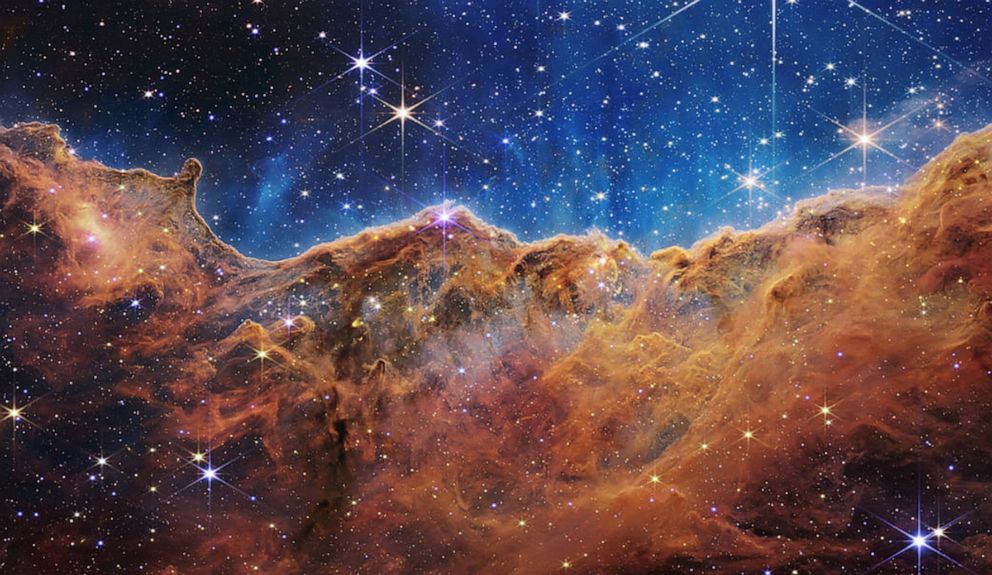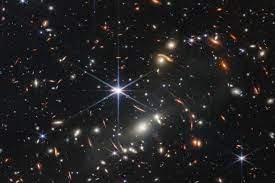You are using an out of date browser. It may not display this or other websites correctly.
You should upgrade or use an alternative browser.
You should upgrade or use an alternative browser.
The Most Beautiful Picture I've Ever Seen Besides My Grandson
- Thread starter Pepper
- Start date
hollydolly
SF VIP
- Location
- London England
Peps..I can't really see what it is ?
Here's a video... also ....https://www.cnn.com/us/live-news/james-webb-telescope-images-released/index.html
Last edited:
"The final image revealed Tuesday from the James Webb Space Telescope has revealed new details about the Carina Nebula, located in the Milky Way Galaxy.
The image, which is actually just the edge of the nebula, shows hundreds of stars never seen before within the cloud.
Because of the massive amounts of dust and gas that exist within the nebula, the stars were not visible to the human eye.
The area, referred to as the Cosmic Cliffs, shows a "giant, gaseous cavity" as young stars that were recently born push down ultraviolet radiation and create the jagged-looking edge."

The image, which is actually just the edge of the nebula, shows hundreds of stars never seen before within the cloud.
Because of the massive amounts of dust and gas that exist within the nebula, the stars were not visible to the human eye.
The area, referred to as the Cosmic Cliffs, shows a "giant, gaseous cavity" as young stars that were recently born push down ultraviolet radiation and create the jagged-looking edge."

!!!!!View attachment 229017
Awestruck. I'm in love.
"Galaxies collide in Stephan’s Quintet, pulling and stretching each other in a gravitational dance. In the mid-infrared view here, see how Webb pierces through dust, giving new insight into how interactions like these may have driven galaxy evolution in the early universe."


Amazing!"The final image revealed Tuesday from the James Webb Space Telescope has revealed new details about the Carina Nebula, located in the Milky Way Galaxy.
The image, which is actually just the edge of the nebula, shows hundreds of stars never seen before within the cloud.
Because of the massive amounts of dust and gas that exist within the nebula, the stars were not visible to the human eye.
The area, referred to as the Cosmic Cliffs, shows a "giant, gaseous cavity" as young stars that were recently born push down ultraviolet radiation and create the jagged-looking edge."

RadishRose
SF VIP
- Location
- Connecticut, USA
I just saw these last two on ABC News. Beautiful!



